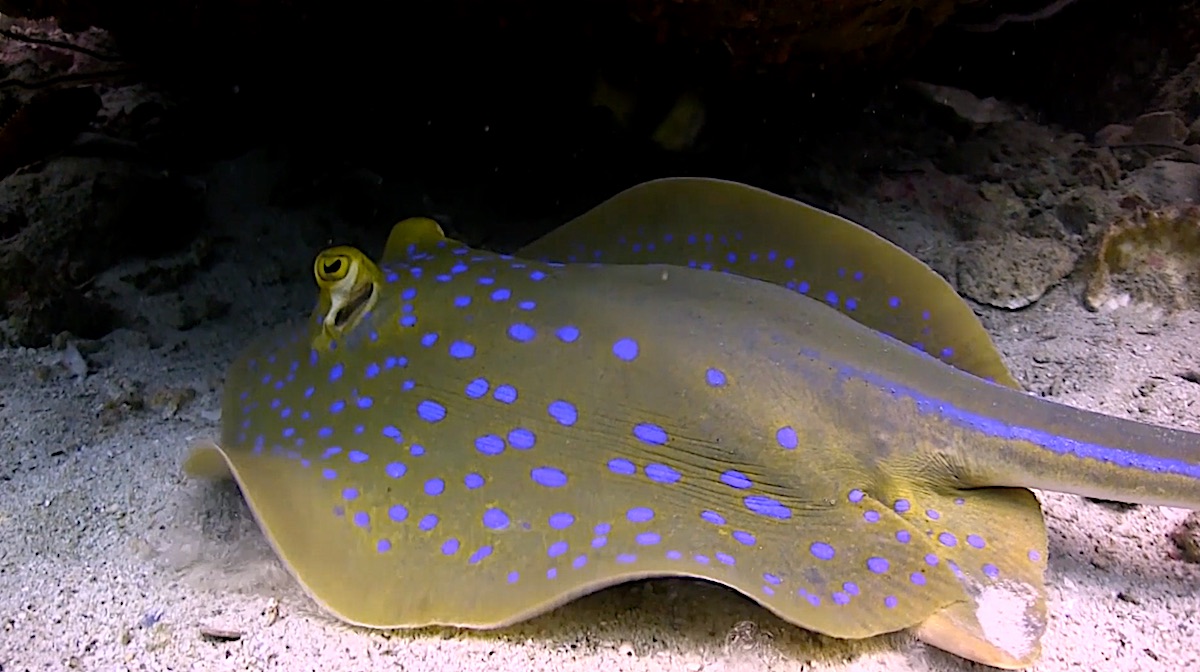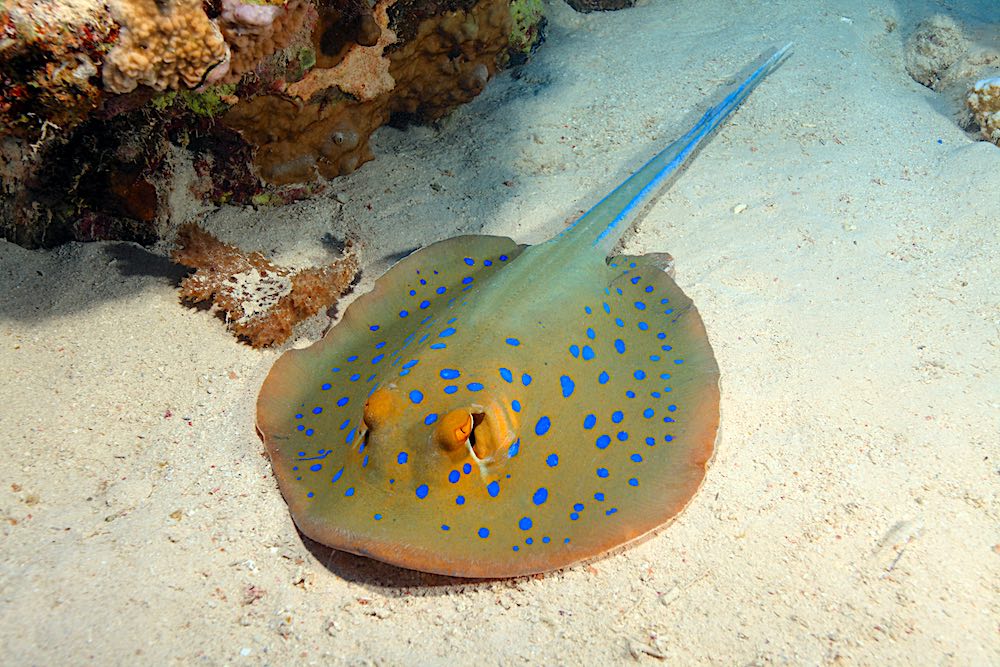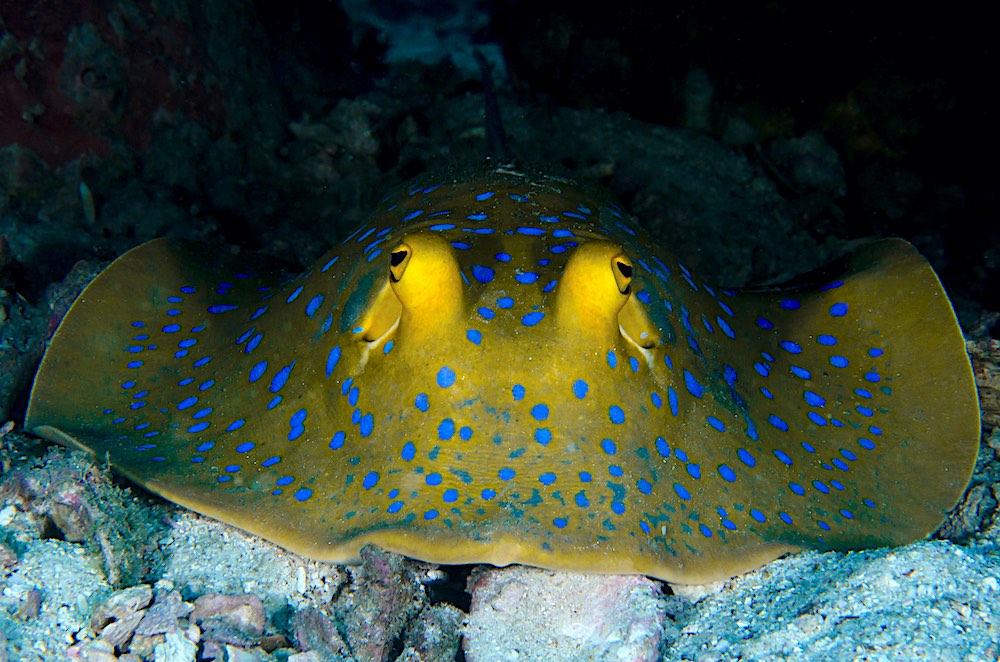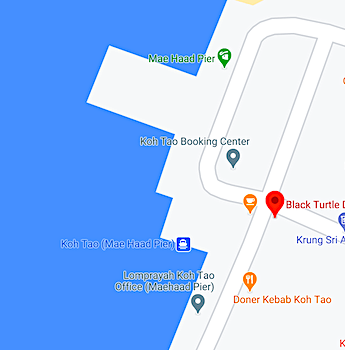Blue Spotted Ribbontail Ray Koh Tao
Learn about the Blue Spotted Ribbontail Ray Koh Tao
The Blue Spotted Ribbontail Ray is the most common species of stingray seen by scuba divers and snorkelers at the dive sites around Koh Tao.

Where to find the Blue Spotted Ribbontail Ray on Koh Tao
You can find the Blue Spotted Ribbontail Ray at many of the dive sites around Koh Tao including White Rock, Twins, Aow Leuk bay & Mango Bay.
How to Identify a Blue Spotted Ribbontail Ray
Blue Spotted Ribbontail Rays have a yellow to brown to olive-green elongated-oval shaped body, referred to as a disc, which is scattered with blue spots of varying sizes on top and white underneath where the mouth is situated.
The Blue Spotted Ribbontail Ray has bright yellow colored eyes protruding out from their body and they have the ability to change the size of their pupils.
Beautiful Blue Spotted Ribbontail Ray
Alongside their eyes are two spiracles, which are used to take water in and to push it over the gills.
The tail extends back from the disc and has a prominent blue stripe down either side and towards the end of the tail is a large spike and a medium sized spike with venom inside.
A Blue Spotted Ribbontail Ray grows to approximately 35 cm wide and they can be up to 80 cm in length and typically weigh no more than 5 kg.

Blue Spotted Ribbontail Ray Characteristic Behaviour
- A Blue Spotted Ribbontail Ray is a forager and digs in the sand, hunting shallow sand-dwelling animals such as shrimp, crabs, sand worms, clams, mussels and small fish.
- Blue Spotted Ribbontail Rays frequently visit cleaning stations where there are species of cleaner fish. You can find wrasse, gobies and cleaner shrimp gathering to remove parasites from the rays body, which helps to keep its spots bright and visible.
- The Blue Spotted Ray does not hide from predators by burying itself in the sand similar too many other rays. Instead it ensures its bright blue spots are clearly visible, which alerts potential predators they have deadly, venomous spines in their tail to stab them with.
- Each individual Blue Spotted Ribbontail Ray has its own distinctive pattern of blue spots.
- Blue-Spotted Ribbontail Rays have no teeth and they crush marine life prey in their mouth between two hard tooth plates.
Interesting Facts about the Blue Spotted Ribbontail Ray
Hammerhead Sharks regularly prey on the Blue Spotted Ribbontail Ray and Orca’s have also been known to prey on Juvenile rays.
Blue Spotted Ribbontail Rays grow as eggs and remain inside the body of their mother for a period of four months to a year.
The mother can have up to seven in a litter and live rays are born shortly after hatching inside the mother and they display their blue spots at birth.

Communicate via Electroreception
Blue Spotted Ribbontail Rays use electroreception to communicate with other members of its species and it helps to locate prey by picking up on subtle temperature differences and electrical fields generated by other animals in the sand.
IUCN has assessed the Blue Spotted Ribbontail Ray as Near Threatened (NT) and although relatively common, the Blue Spotted Ribbontail Ray faces threats due to the destruction or degradation of Coral reefs, construction, fishing and the aquarium trade.






